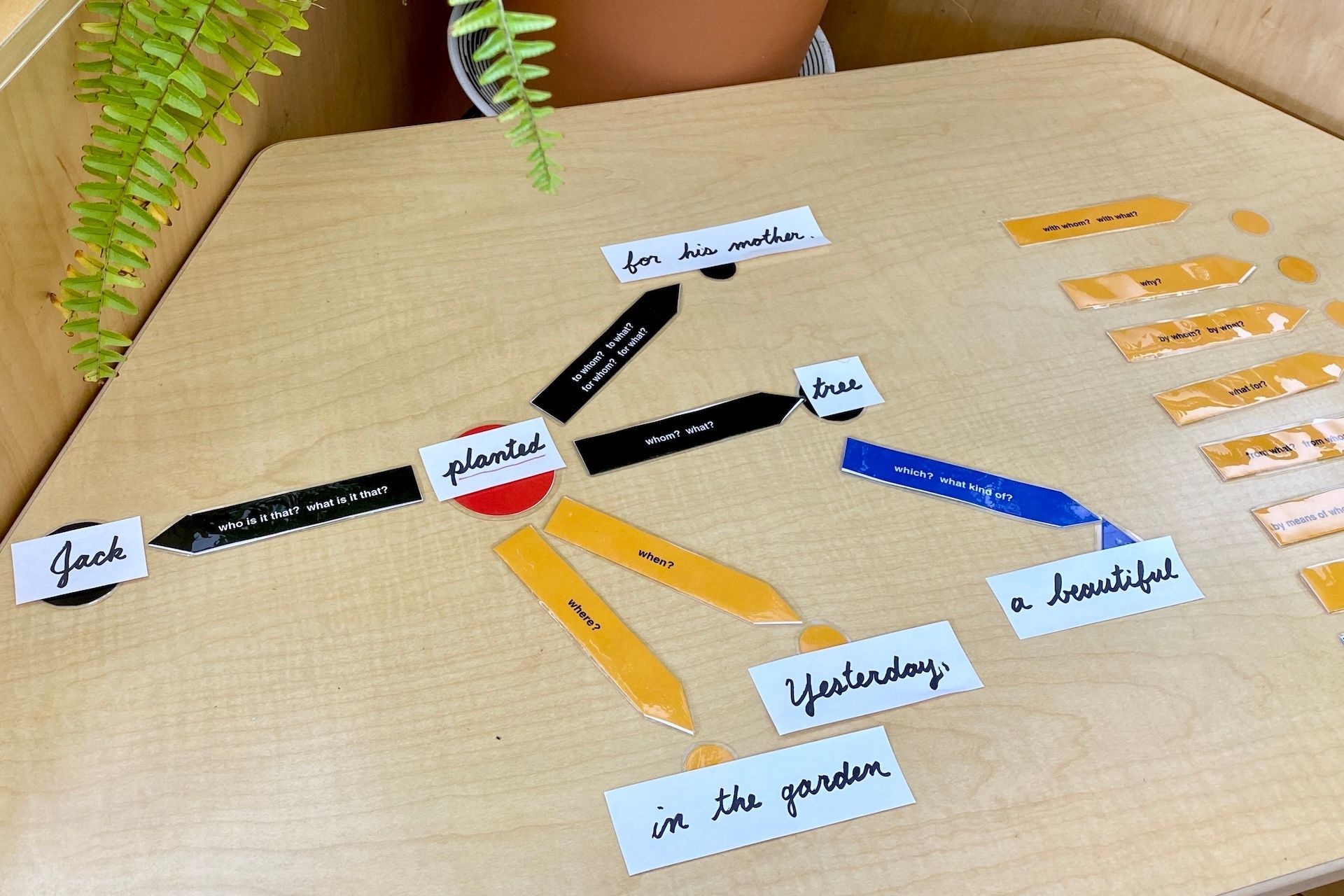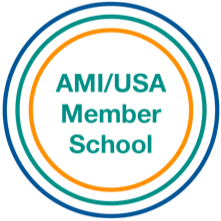
Discover the magic of Montessori sentence analysis! Help children explore grammar through hands-on activities, fostering a love for language and writing.
Did you know that the word "grammar" evolved from "glamour"? This linguistic connection reflects an ancient association between language and enchantment. When we introduce Montessori's sentence analysis work, we offer more than just a lesson—we present an enchanting gift!
We regularly witness children falling in love with language as they uncover its patterns and structures. At the elementary level, children possess a reasoning mind, an active imagination, and a deep need for communication. The Montessori sentence analysis activities appeal to these characteristics, helping children connect as they creatively discover the underlying patterns of our language.
Why Do We Teach Sentence Analysis in the Elementary?
- Children are natural pattern seekers. They love to identify and understand structures in the world around them, including language.
- We want them to fall in love with language. By engaging in hands-on grammar work, children develop an appreciation for the beauty of sentence construction.
- Sentence analysis provides clarity. Understanding sentence structure helps children write with greater precision and confidence.
- Analysis leads to synthesis. When children break down sentences, they gain the tools to build more complex and meaningful expression in their own writing.
What Sentence Analysis Involves
The elementary sentence analysis materials introduce a set of symbols (that correlate to what children have experienced with the Montessori grammar boxes and the symbols for parts of speech), along with color-coded arrows with questions on one side and grammatical names on the other.
When breaking apart the parts of the sentence, children first identify what brings the sentence to life: the verb (predicate). To identify the subject of the sentence, children ask the questions from one of the arrows emanating out from the action: Who is it that? What is it? By answering those questions, the children are able to determine the subject.
Let’s use a very simple sentence as an example: Josie jumped. The children first identify the action: jumped. They can underline this word in red and then can cut it out or tear it out in order to be able to place the word on the red predicate circle. Then they use the black arrows to answer the question: Who is it that jumped? Josie!
The subject emanates out from the predicate, reflecting standard English sentence structure. We then directly teach other sections of the sentence like direct and indirect objects. For example, Raphael planted a tree for his mom.
Once we introduce adverbials, children take off independently, excitedly creating long sentences by answering the different questions on the arrows. We also explore attributives, compound subjects and compound predicates, and even compound direct and indirect objects.
We introduce this work early in the elementary years, beginning with simple sentences and progressing to compound and complex sentences. Children first learn to analyze and name the parts of a simple sentence before moving on to more complex structures. However, because simple sentences are rare in authentic texts, once children are confident with the structure of a simple sentence, we quickly move to varied sentence types.
Children can write their own sentences on paper strips or rolls of paper (like adding machine rolls). Using this kind of paper encourages students to create longer, continuous sentences, reinforcing their understanding of sentence expansion and modification. The questions on the arrow guide children in both creating sentences and analyzing the parts of sentences. The focus is not on achieving 100% correctness but on engaging in the activity and thinking critically about sentence structure.
Where Do They Go From Here?
Children love to play with sentence analysis work! They might challenge themselves to create the longest compound sentence possible, or they might try to include all the adverbial phrases in one sentence.
To deepen their understanding, children can analyze sentences from various sources: their own writing, newspaper or magazines, read-aloud books, graphic novels, non-fiction texts, teacher-created sentences, and sentences from classmates. They love to create sentences for each other to analyze. Plus, student-generated sentences provide organic opportunities for individualized teaching moments.
Montessori sentence analysis serves as a gateway to advanced writing and grammar exploration. As children progress, they refine their understanding of sentence construction, enhancing both their reading comprehension and their ability to write with clarity and sophistication. Ultimately, children internalize essential rules of grammatical construction just by experimenting with creating, deconstructing, and sometimes even reconstructing sentences.
By engaging deeply with sentence analysis, children develop a lifelong appreciation for the structure and beauty of our language–the glamour of grammar! If you are interested in seeing how this gift continues to unfold as children grow through the Montessori program, contact us to schedule a tour!



